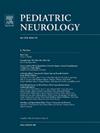Epileptic Spasms in Septo-Optic-Pituitary Dysplasia: A Retrospective Cohort Study
IF 2.1
3区 医学
Q2 CLINICAL NEUROLOGY
引用次数: 0
Abstract
Background
To assess the prevalence, clinical characteristics, and outcomes of epileptic spasms (ES) in patients with septo-optic-pituitary dysplasia (SOD).
Methods
A retrospective chart review was conducted on patients aged <21 years diagnosed with both SOD and ES between 2012 and 2023. Clinical and neuroimaging data were analyzed, as well as electroencephalographic (EEG) findings and long-term outcomes.
Results
Among 105 patients with SOD, seven (6.7%) were diagnosed with ES. The mean age of ES onset was 8.2 months (range: 0.1-13.3 months), with a female predominance (71.4%). Neuroimaging revealed optic nerve hypoplasia, an absent septum pellucidum, and schizencephaly in all patients. A dysplastic corpus callosum and a small pituitary gland size were noted in one (14.3%) patient. Two (28.6%) patients had comorbid diabetes insipidus. All patients experienced severe developmental delays and were nonverbal and nonambulatory. EEG analysis showed a hypsarrhythmia pattern in four (57.1%) cases. The mean age at last follow-up was 9.9 years (range: 4.6-15.6 years). All patients developed drug-resistant epilepsy; only one had complete resolution of the seizures. Five (71.4%) patients developed Lennox-Gastaut syndrome (LGS).
Conclusions
ES have a relatively high prevalence, occurring in 6.7% of patients with SOD, and are linked with significant neurodevelopmental delays and a high risk of progression to LGS. Clinicians should maintain a high index of suspicion for ES in patients with SOD, as early identification and management may impact long-term neurodevelopmental outcomes.
中隔-视-垂体发育不良的癫痫性痉挛:一项回顾性队列研究
背景:评估中隔-视垂体发育不良(SOD)患者癫痫性痉挛(ES)的患病率、临床特征和结局。方法回顾性分析2012 ~ 2023年诊断为SOD和ES的21岁患者的病历。分析临床和神经影像学资料,以及脑电图(EEG)结果和长期预后。结果105例SOD患者中,有7例(6.7%)诊断为ES。ES发病平均年龄为8.2个月(0.1 ~ 13.3个月),以女性为主(71.4%)。所有患者均有视神经发育不全、透明隔缺失和脑裂。1例(14.3%)患者胼胝体发育不良,脑垂体体积小。2例(28.6%)合并尿崩症。所有的患者都经历了严重的发育迟缓,并且是非语言和不能走动的。脑电图分析显示4例(57.1%)患者心律失常。末次随访平均年龄9.9岁(范围4.6 ~ 15.6岁)。所有患者均出现耐药性癫痫;只有一个人的癫痫完全消退了。5例(71.4%)患者出现lenox - gastaut综合征(LGS)。结论ses的患病率相对较高,占SOD患者的6.7%,且与显著的神经发育迟缓和进展为LGS的高风险相关。临床医生应该对SOD患者的ES保持高度的怀疑,因为早期识别和处理可能会影响长期的神经发育结果。
本文章由计算机程序翻译,如有差异,请以英文原文为准。
求助全文
约1分钟内获得全文
求助全文
来源期刊

Pediatric neurology
医学-临床神经学
CiteScore
4.80
自引率
2.60%
发文量
176
审稿时长
78 days
期刊介绍:
Pediatric Neurology publishes timely peer-reviewed clinical and research articles covering all aspects of the developing nervous system.
Pediatric Neurology features up-to-the-minute publication of the latest advances in the diagnosis, management, and treatment of pediatric neurologic disorders. The journal''s editor, E. Steve Roach, in conjunction with the team of Associate Editors, heads an internationally recognized editorial board, ensuring the most authoritative and extensive coverage of the field. Among the topics covered are: epilepsy, mitochondrial diseases, congenital malformations, chromosomopathies, peripheral neuropathies, perinatal and childhood stroke, cerebral palsy, as well as other diseases affecting the developing nervous system.
 求助内容:
求助内容: 应助结果提醒方式:
应助结果提醒方式:


